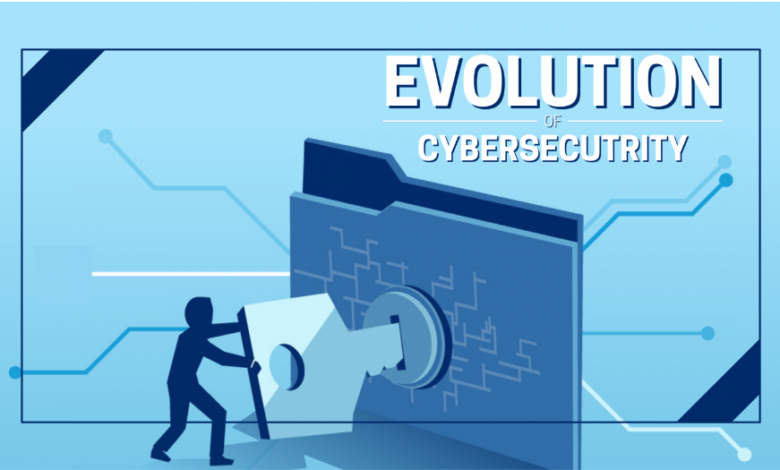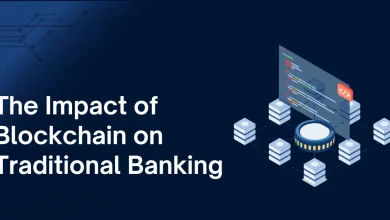The Evolution of Cyber Threats
The Evolution of Cyber Threats: A Journey from Pranks to Global Warfare

In the ever-expanding digital landscape, cyber threats have evolved from minor pranks to significant global challenges. Understanding this evolution is crucial for anyone interested in cybersecurity, whether as a professional or as a concerned individual. Let’s take a journey through the history of cyber threats, exploring how they’ve developed over the years and the implications they hold for our increasingly connected world.
The Early Days: Curiosity and Pranks (1970s – 1980s)
The earliest cyber threats were often the work of curious minds exploring the boundaries of newly emerging technology. In the 1970s, the concept of hacking was still in its infancy. Most hackers were enthusiasts experimenting with computers, often without malicious intent. One of the first documented instances of a cyber threat was the creation of the Creeper virus in 1971. This harmless virus spread across ARPANET (the precursor to the internet), displaying the message, “I’m the creeper: catch me if you can.” Its creator, Bob Thomas, intended it as an experiment rather than a malicious attack.
By the 1980s, hacking had begun to take on a more mischievous tone. During this decade, we saw the emergence of the first computer worms, such as the Morris Worm in 1988. Robert Tappan Morris, a graduate student, created this worm to measure the size of the internet. However, due to a programming error, the worm spread rapidly and caused significant disruptions. Leading to one of the first large-scale internet shutdowns. The incident highlighted the potential for unintended consequences in the digital world, signaling a shift from harmless exploration to real-world impacts.
The Rise of Cyber Crime: Profit-Motivated Attacks (1990s – Early 2000s)
As the internet grew in the 1990s, so did the potential for financial gain through cyber attacks. Hackers began to realize that they could exploit vulnerabilities in computer systems for profit. Marking the beginning of cybercrime as we know it today.

One of the most notable events of this era was the rise of phishing attacks. In 1996, AOL users became the target of one of the first large-scale phishing scams. Where attackers tricked users into revealing their login credentials. This marked a significant shift like cyber threats, from curiosity-driven to financially motivated.
The 1990s also saw the emergence of more sophisticated malware, such as the Melissa virus in 1999. Melissa spread through email, infecting computers and causing widespread disruptions. Unlike the Morris Worm, Melissa was designed with a clear intent to cause harm. Reflecting the growing malevolence in cyber threats.
By the early 2000s, cybercrime had become a lucrative business. The rise of botnets, networks of infected computers controlled by hackers, allowed cybercriminals to launch large-scale attacks, such as Distributed Denial of Service (DDoS) attacks, which could cripple websites and online services. This period also saw the growth of the underground economy, where stolen data and malware were bought and sold on the dark web, further fueling the rise of cybercrime.
The Age of Hacktivism: Ideology-Driven Attacks (The mid-2000s – 2010s)
In the mid-2000s, cyber threats began to take on a new dimension as groups and individuals started using hacking as a tool for activism, a phenomenon known as hacktivism. These attacks were motivated not by profit but by ideological beliefs, often aimed at promoting a political or social agenda.
One of the most famous hacktivist groups, Anonymous, emerged during this time. Anonymous conducted a series of high-profile attacks. Including DDoS attacks on websites belonging to governments, corporations, and religious groups. Their actions were often in response to perceived injustices, such as censorship or corruption. And were intended to disrupt the operations of their targets while drawing attention to their causes.
Another significant development during this period was the rise of state-sponsored cyber attacks. Governments began to recognize the potential of cyber warfare as a means of achieving political and military objectives. One of the most infamous examples of state-sponsored cyber warfare is the Stuxnet worm, discovered in 2010. Stuxnet was a sophisticated piece of malware that targeted Iran’s nuclear program. causing physical damage to centrifuges used in uranium enrichment. It is widely believed that Stuxnet was developed by the United States and Israel. Marking a new era in the use of cyber threats as a tool of statecraft.
The Modern Era: Advanced Persistent Threats and Global Cyber Warfare (2010s – Present)
Today, cyber threats have reached a level of sophistication and scale that was unimaginable just a few decades ago. The modern era is characterized by Advanced Persistent Threats (APTs). Where attackers infiltrate networks and remain undetected for extended periods, often with the backing of nation-states.
One of the most notable APTs in recent years is the attack on Sony Pictures in 2014. Hackers associated with North Korea infiltrated Sony’s network, stealing vast amounts of data and releasing sensitive information, including unreleased films and confidential emails. The attack was in retaliation for the planned release of a satirical film about North Korea, demonstrating how cyber threats can be used to influence global events.
The rise of ransomware has also been a defining feature of the modern cyber threat landscape. Attacks like WannaCry in 2017, which infected hundreds of thousands of computers across the globe, including critical infrastructure like the UK’s National Health Service, have shown the devastating impact ransomware can have. These attacks often demand payment in cryptocurrencies, making it difficult for authorities to trace and combat the perpetrators.
Moreover, the COVID-19 pandemic has accelerated the digital transformation of businesses and governments, making them more vulnerable to cyber threats. Remote work, increased reliance on cloud services, and the rapid adoption of new technologies have expanded the attack surface, providing cybercriminals with more opportunities to exploit vulnerabilities.
The Future of Cyber Threats: Emerging Trends and Challenges
As we look to the future, the evolution of cyber threats shows no signs of slowing down. With the increasing integration of artificial intelligence (AI) and machine learning in both defensive and offensive cyber operations, the nature of these threats is expected to become even more complex.
AI-driven cyber attacks could potentially outpace traditional defenses, as they can adapt and evolve in real time, making them harder to detect and mitigate. Additionally, the growing interconnectivity of devices through the Internet of Things (IoT) presents new challenges, as these devices often have weaker security measures, making them attractive targets for attackers.

In conclusion, the evolution of cyber threats has transformed from early, harmless experiments to a critical global challenge that affects every aspect of our lives. As technology continues to advance, so too will the threats we face. Individuals, businesses, and governments need to stay informed and proactive in defending against these ever-evolving dangers, ensuring that the digital world remains a safe and secure place for all.




